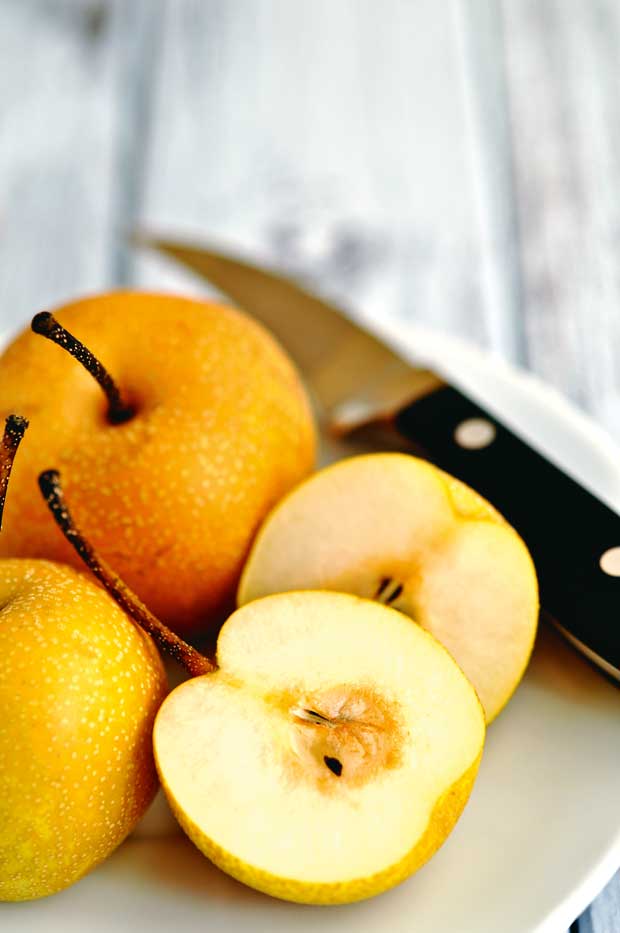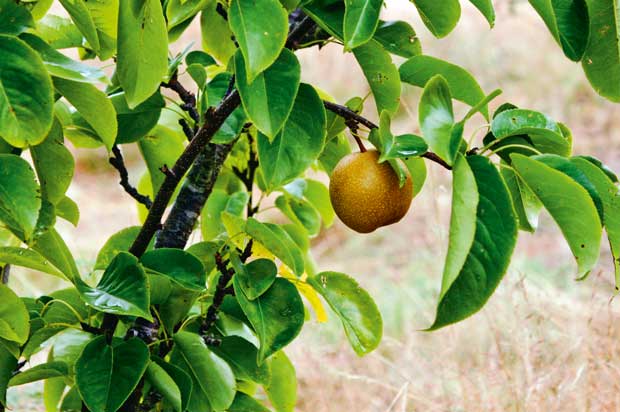Tips for growing nashi pears

Nashi pears have a reputation for their poor taste, but you’ll never know the joy of a truly magical-tasting pear until you grow your own.
Words: Ben Gaia
Lots of folk have opinions on just how bad nashi pears are to eat.
“Oh no, too watery.”
“No flavour, bland.”
“I don’t like them.”
The nashi or ‘Asian’ pears they’re talking about are all ones bought from a supermarket. That’s where you’re going wrong if you have a similar opinion and haven’t tried one fresh, at the perfect picking point.
As with apples and all the other pipfruit we can buy in supermarkets, we only get to buy nashi that are not good enough to export. They are too big or too small, picked early and cool stored, not fully tree-ripened, not symmetrical enough. Their bland flavour is a result of our imperfect supply chain, and our status as retail consumers of export rejects.
But try a nashi, or any pear, fresh from the tree, picked in ideal conditions, and they are one of the most delicious fruit you can eat. Nashi suit New Zealand’s climate, especially where it’s a bit like France: nice cool winters, plenty of rain, good drainage. Similar conditions can also be found in Japan, the home of the nashi (Pyrus pyrifolia). They will handle quite stoney ground and cold winters with snow, so if you can grow plums and cherries inland, it’s another staple variety.
Nashi can be early or late season. The best performer in NZ seems to be Hosui, but I have a good seedling pip-grown one which fruits late. The fruit lingers if the wasps stay away, ripening to a deep orange-brown.
These are beautiful trees too. Give them good shelter, plenty of manure, water through northern droughts, and prune every year quite mercilessly, and you’ll get the most thrilling blossom display. It will attract bees to all your pipfruit trees, helping other pears to be pollinated, then bear the sweetest droplets of juice you’ll ever taste.
Like all pears, if you pick and eat nash the day before they rot you will be transported to fruit heaven. Visitors here try the ripe fruit offered to them and can’t believe the difference between a store-bought one and the juicy flesh of a fresh one, that’s similar to a melon. A real organic ripe nashi will never disappoint. It will be golden, crisp but yielding, bursting with juice, and full of sunlight and natural sugars. Perhaps you will find you do like nashis after all.
WHY YOU WANT TO PLANT LOTS OF PEARS
If you’re going to grow pears, it pays to grow as many different varieties as you can because the cross-pollinating that goes on is complex. A wide variety of seedlings and cultivars helps to create more pollinated blossom and more pears, and nashi are definitely ones you want to add to your orchard collection.

BEN’S 4 TIPS TO PRESERVING NASHI
1. Nashi are easily preserved by bottling when slightly unripe
2. Stew chopped pears, or use them in a crumble
3. Skins can be tough, so peel them, whether you are eating them raw or cooked
TURN YOUR PEARS INTO ALCOHOL
Cider is made from apples, and the equivalent for pears is known as perry. The basic process is the same, although there is a bit more of an art to getting a good-tasting perry. There are some excellent, detailed instructions here, with some great home-made equipment ideas too.
ABOUT THE AUTHOR
Ben Gaia grows trees in the extreme climate of the West Coast of the South Island and runs a mail order nursery for organic fruit and forestry trees, www.dialatree.co.nz
Love this story? Subscribe now!
 This article first appeared in NZ Lifestyle Block Magazine.
This article first appeared in NZ Lifestyle Block Magazine.
